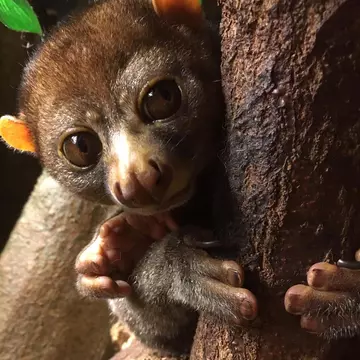
Potto facts
Pottos are a nocturnal species of primate which one limb at a time through the rainforest canopy. This type of movement is called 'crypsis' and it makes it very hard for predators to spot them. Pottos have a short vestigial index finger, which makes them appear like they only have four fingers.
Pottos have their own very distinct odour that is often likened to the smell of curry, which you will be able to smell when you visit them.
What do pottos eat?
Fruits and invertebrates (especially insects other animals don;t want to eat) in the wet season and gum from trees in the dry season.

Pottos at the Zoo
Our pottos are some of the very few found in zoos across Europe, and by working closely with them we are advancing understanding of their behaviour and ecology. The taxonomy of pottos is still poorly understood, it was previously thought there was 1 species with 3-5 subspecies but it has been established that there are between 3-5 distinct species. We sent hair samples of ours to Germany for DNA testing which confirmed we have a pair of West-African pottos.
Our male was most likely a victim of the illegal wildlife trade and was found in a box outside Paris Zoo in 2008. He arrived with us the following year, so we don't know where he came from or even how old he is.
Extensive habitat destruction due to overpopulation is putting potto populations at risk, along with poaching for bushmeat, the pet trade and traditional medicine.
